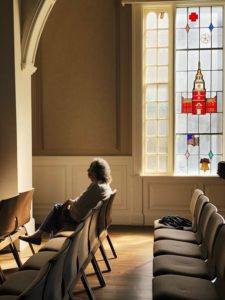Every congregation is unique. It is located in a specific place, has a particular history, and evidences a unique culture. Yet dynamics and patterns of behavior recur across denominations, polities, and locations. Following are a set of congregational constants that I’ve observed across religious traditions. Each reader can decide whether they are true of your congregation, and if so, how they might help you to become a more effective leader.
change
Urgency Works, but Is It the Only Driver of Change?

It is too soon to create a definitive list of all the things we will have learned from this pandemic, but I’m clear about one thing—John Kotter was right that urgency does drive change. Under pressure from the Covid-19 pandemic and outrage over police violence against black people, congregations have made changes I thought I would never see. Will we be able to continue innovating when extreme urgency no longer forces us to do so?
When a Congregation Goes Virtual
Congregations around the world have made a dramatic pivot in recent weeks—from regular face-to-face gatherings to entirely online services and meetings via Facebook Live, Zoom, and other platforms. The transformation that decades of proliferating social media and streaming platforms failed to achieve was accomplished by the coronavirus pandemic in just a month.
But what has it been like on the receiving end?
Should the Leader Advocate for Change?
Clergy often try to change their congregations, and a rule, their efforts meet resistance. It hurts to be seen as a threat by the very people you are trying to serve, but when a leader’s first move is to advocate for change, that’s generally what happens.
It’s Crazy Out There: Practices for Religious Leaders
We live in a “VUCA” world—a world of Volatility, Uncertainty, Complexity and Ambiguity. A recent Harvard Business Review article called VUCA “a catchall for ‘Hey, it’s crazy out there!’” Religious leaders can engage these “crazy” times intentionally by cultivating practices that I’ll describe here. Though there can be no guarantees of success when dealing with volatile change and uncertainty, I offer these practices as a starter list—you’ll add your own.
Think “They” Need to Change? Start With Yourself!
Those of us who are older cannot expect the church to stay the same to accommodate our preferences. Every church needs to change if it is to continue to be faithful, and the only way for that to happen is if each of us agrees to start with ourselves.
What I No Longer Believe about Congregations
Susan Nienaber
For most of my consulting practice, I “held certain truths to be self-evident.” I used to believe, for instance, that many congregations had declined so far they could not possibly revitalize—but I have changed my mind.


